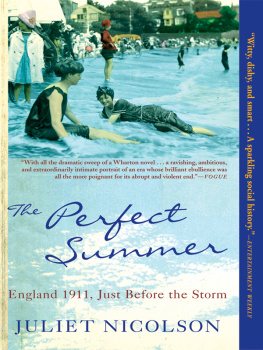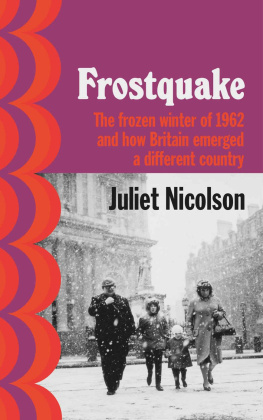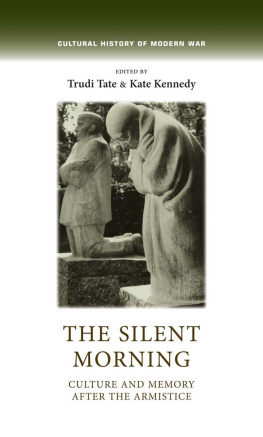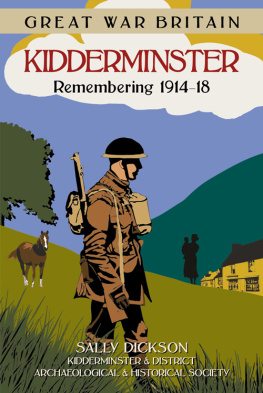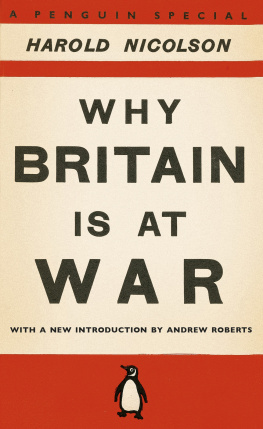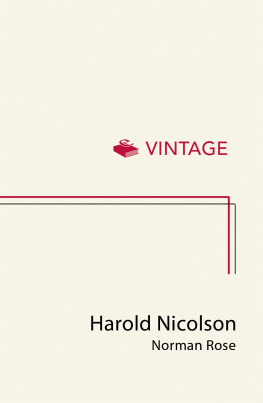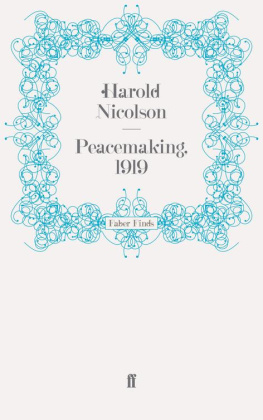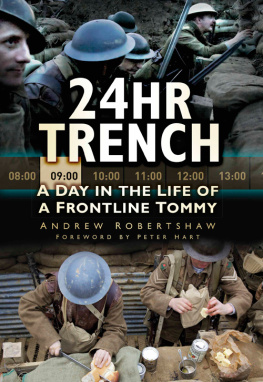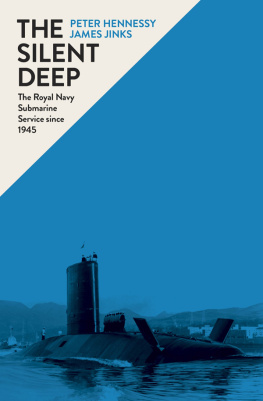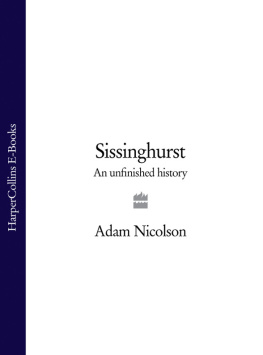The Great Silence
Also by Juliet Nicolson
The Perfect Summer
The Great Silence
Britian from the Shadow of the First World War
to the Dawn of the Jazz Age
JULIET NICOLSON

Copyright 2009 by Juliet Nicolson
All rights reserved. No part of this book may be reproduced in any form or by any electronic or mechanical means, including information storage and retrieval systems, without permission in writing from the publisher, except by a reviewer, who may quote brief passages in a review. Scanning, uploading, and electronic distribution of this book or the facilitation of such without the permission of the publisher is prohibited. Please purchase only authorized electronic editions, and do not participate in or encourage electronic piracy of copyrighted materials. Your support of the authors rights is appreciated. Any member of educational institutions wishing to photocopy part or all of the work for classroom use, or anthology, should send inquiries to Grove/Atlantic, Inc., 841 Broadway, New York, NY 10003 or permissions@groveatlantic.com.
First published in Great Britain in 2009 by John Murray (Publishers),
a Hachette UK company
Extracts from The Waste Land and Morning at the Window by T. S. Eliot
reproduced by permission of Faber and Faber Ltd.
Suicide in the Trenches and Blighters reproduced from copyright Siegfried
Sassoon by kind permission of the Estate of George Sassoon.
Quotations from Royal Archives material:
p.110 RA/GV/QMD 1919 21 January Awfully sad and touching;
p.110 RA/GV/QMD 1919 22 January
Missed the dear child very much indeed ...;
p.204 RA/GV/QMD 1919 1 December very cheery;
p.204 RA/GV/QMD 1919 1 December George made a charming speech
and David made a charming reply.
Printed in the United States of America
FIRST AMERICAN EDITION
ISBN-13: 978-0-8021-9704-7 (e-book)
Grove Press
an imprint of Grove/Atlantic, Inc.
841 Broadway
New York, NY 10003
Distributed by Publishers Group West
www.groveatlantic.com
For my brother Adam
il miglior fabbro
and for my daughters Clemmie and Flora
luces meae vitae
and for my husband Charlie
sine qua non

The lingering emotional effects of the war illustrated by a portrait entitled
Grief by Hugh Cecil, Tatler, November 1919, a full year after
the Armistice had been signed
Contents
Illustrations
20. Nancy Astor, after her election to Parliament, 1 December 1919
21. The Prince of Wales, December 1919
22. Demobbed troops protesting about their treatment by the British government
23. Policemen in Whitehall pushing back unemployed workers
24. Cover of Tatler magazine, 26 November 1919
25. Advertisement for the new Hammersmith Palais, October 1919
26. Lillian Gish, in a still from Broken Blossoms, 1919
27. Coco Chanel
28. A Savoy button boy
29. Dame Nellie Melba poised to sing Home Sweet Home, 15 June 1920
30. The ninth Duke and Duchess of Devonshire
31. Joseph Paxtons Great Conservatory at Chatsworth
32. Edna Clarke Hall, self-portrait
33. Lady Ottoline Morrell by Simon Bussy, 1920
34. Lionel Gomme, photograph by Lady Ottoline Morrell, June 1920
35. Winifred Holtby
36. Vera Brittain
37. The coffin of the Unknown Warrior carried through the streets of London, 11 November 1920
Picture Acknowledgements: Photograph documenting Anna Coleman Ladds creation of cosmetic masks to be worn by soldiers badly disfigured during World War I, ca. 1920 / 1 photographic print: silver gelatin; 12 18 cm. Courtesy of the Anna Coleman Ladd papers, ca. 18811950, Archives of American Art, Smithsonian Institution: 1. Devonshire Collection, Chatsworth. Reproduced by permission of Chatsworth Settlement Trustees: 8 below right, 13 above and below. Mary Evans Picture Library: frontispiece page vii, 6 above, 9 below, 11 above. Getty Images: 3 below, 4 below, 6 below right, 7 below, 10 above and below, 15 below right, 16. Dr Andrew Bamji, Curator, Gillies Archives, Queen Marys Hospital, Sidcup: 2 above right and below. Imperial War Museum London: 3 above (Q108161), 4 above (EAUS7I5). National Portrait Gallery, London: 15 above right. Popperfoto/Getty Images: 6 below left. Private Collection: 5 above, 7 above, 8 above left and right, 8 below left, 11 below, 12 above left, 14, 15 below left. Redferns: 12 below right. Courtesy of the Savoy Archives: 12 below left. Tate, London 2009: 15 above left. Time & Life Pictures/Getty Images: 5 below, 9 above, 12 above right.
Every reasonable effort has been made to trace copyright holders, but if there are any errors or omissions, Grove Press will be pleased to insert the appropriate acknowledgement in any subsequent printings or editions.
Acknowledgements
During the writing of this book I have had the privilege of talking to several people who remember life in Britain at first hand ninety years ago. Mrs Doris Tidey was an effervescent 105 when she described her life below stairs both during and after the First World War. My aunt (by marriage) Pam Leigh, now 93, has spent many precious hours making me laugh and cry at her childhood memories. Miss Elaine Rafters stories of work in a department store just after the Great War remained undimmed when she spoke of them, at the age of 101, with infectious humour. Mary Stearns memories of her parents and her Kentish childhood were gold dust. Jeremy Hutchinson and Geoffrey Woolley, both now aged 94, provided the smallest and therefore most absorbing details of two specific days, 11 November 1918 and 1919.
There is one other person who cannot quite remember those events, as she was born in the spring of 1920. However I am indebted to the Dowager Duchess of Devonshire for her acute sensibility of the period and for allowing me to read the wonderful letters of her then schoolboy brother Tom Mitford who was killed in the Second World War.
I am indebted to Her Majesty Queen Elizabeth II for allowing me access to the Royal Archive at Windsor and for permission to quote from Queen Marys Diaries. I am also grateful to Miss Pamela Clarke and her staff at the archive.
The generation born to those who lived through the events I describe have been most generous with their time and their private family archives. I would like to thank Ronald Atkins for the background material on Tommy Atkins, and Dame Eileen Atkins for giving me such a vivid portrait of her father. I am grateful to Fiona Clarke Hall for talking to me about her mother-in-law Edna and her husband Denis. Ginny Coombes took infinite trouble in trusting me with the papers and the story of her great-uncle Edward Tester. I am grateful to Michael Ann for the valuable memories of his father, the entrepreneurial owner of Drusillas Zoo in Sussex, and to John Leigh Pemberton for early memories of conversations with his mother. Adrian Goodman, grandson of Ottoline Morrell, was illuminating about his grandmother and I am grateful to Rosalind Ingrams for showing Garsington to me. Conversations with the Marquess of Lansdowne and Hugh Myddleton brought their Granny Vi Astor to life and Philip Astor kindly lent me many moving letters written to her during the war. I was delighted to speak to Peter Jones, the nephew of the splendid but hitherto elusive butler Eric Horne. Mrs Titleys daughter Dorothy Ellis has been most generous with her time since the death of her mother in 2008.
Next page

